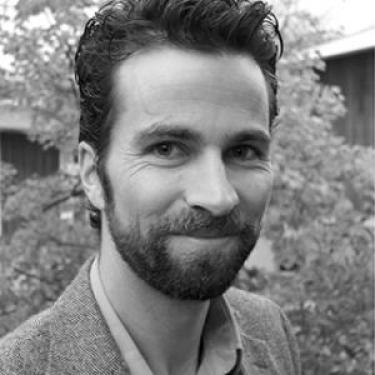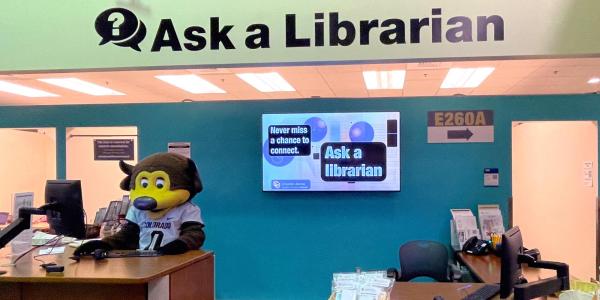
Students in Peter Newton's course on sustainable food systems visit a local farm.
Like many faculty members everywhere, Environmental Studies Program Assistant Professor Peter Newton had very little hands-on teaching experience when he began his current position at CU Boulder. While research came as second nature, teaching was something else entirely.
He found much-needed support and ideas through the Faculty Teaching Excellence Program (FTEP) on campus, and even won a course-development grant from the New Assistant Professor Program (NAPP). With the objective of increasing student engagement in his undergraduate course on sustainable food systems, Newton organized a field trip to a local farm and devised experiential learning assignments—such as requiring students to eat sustainably and ethically for a week and document their experiences. Not only did students seem more engaged, the course met the learning objectives.

Peter Newton
Now, under a new program called Making Teaching and Learning Visible, CU Boulder faculty will have access to a trove of best practices in the realm of teaching in the form of a web-based collection of portfolios.
“There is so much hidden when it comes to teaching,” Newton said. “We are all trying to develop courses and teach to the best of our ability, and if teaching practices and experiences were more visible then it would be easier to learn from each other’s experiences. To the extent we can share experiences, successes, and failures in the classroom, we can develop ourselves as better teachers.”
Making Teaching and Learning Visible (MTLV) aims to document scholars’ teaching methods, theoretical premises and design strategy. By publishing course portfolios, the MTLV project invites faculty to openly discuss what’s working in the classroom and share ways to engage students and ensure their academic success.
“The aim is to change campuswide conversations on goals for learning and how faculty assess learning and teaching on campus,” said Mary Ann Shea, director of FTEP, which is overseeing the MTLV initiative. “A second goal is to reward faculty members’ intellectual inquiry and assessment design.”
The beginnings of Making Teaching and Learning Visible
FTEP sponsored a weeklong institute in May 2016, introducing Daniel Bernstein, professor emeritus of psychology at the University of Kansas and a nationally recognized researcher in the scholarship of teaching and learning. Bernstein directed KU’s Center for Teaching Excellence from 2002 to 2016, where he spearheaded the publication of course portfolios. During his visit to CU Boulder, Bernstein led discussions and workshops with faculty on how to enhance their pedagogical practices by assessing student learning and documenting the intellectual inquiry and research that informs their learning design.
Over the summer, 12 CU Boulder faculty members representing diverse disciplines such art history, computer science, atmospheric and oceanic science, biology, engineering, English and psychology participated in FTEP’s Summer Institute for measuring classroom learning.
A team of seven faculty—including Newton—are completing research projects that reimagine their learning design for a whole course or a unit of a course. They are collecting data during the 2016–17 academic year on diverse pedagogical studies. Each faculty member has identified a specific teaching practice to adapt, track and evaluate for student learning outcomes.
FTEP plans to begin publishing course portfolios on its website in fall 2017. Each course portfolio includes the following five sections:
- Summary of pedagogical question under study
- Background of the course (how it fits into department curricula and the faculty’s experience teaching the course)
- Implementation of new teaching strategies and assignment design
- Student work that demonstrates the results of new pedagogy
- Reflections of faculty instructor on the learning outcomes of the study
One of the objectives of MTLV is to reward faculty for modeling how they practice communal learning and cultivate open-mindedness in the classroom by opening discussion to a variety of opinions. These strategies make learning resonate with students’ experiences in the world today, engage their interest, develop intellectual curiosity and promote student success.
“By publishing course portfolios, CU Boulder faculty contribute to the scholarship of teaching and learning,” Shea said. “These portfolios offer faculty the opportunity to reflect on their own and others’ pedagogical practices and enrich teaching across the university. Our vision is that MTLV course portfolios will become part of the fabric of the institution’s exchange of ideas.”
Learning from faculty across disciplines
Like Newton, senior instructor Heidi Day lacked classroom experience before she began teaching neuroscience.

Heidi Day
Day realized students in her upper division course on the neurobiology of stress struggled to get through and absorb dense research literature. She restructured part of her course so that students learn to interpret graphical data, and recognize the limits of the data.
“Overall, what I’m trying to do is have students analyze graphical data in the way a research scientist would,” Day said. “They should not take an author’s words at face value, but should think critically about the data the author presents. At the same time, students should take care not to over-interpret data based on other knowledge they might have.”
Day said students are encouraged to recognize the limitations of the data and to think about questions the data provoke. The next step is to design experiments to answer those questions. By the end of the semester, students should be able to summarize data from a research paper that is presented without the benefit of title, abstract or discussion, propose research questions that arise from the data in the paper and propose experimental approaches to test those questions, she said.
“This approach is hopefully beneficial not only for students going into a career in research or medicine, but also for any consumer who needs to determine the merit of the latest scientific headlines,” Day said.
Day said she hopes faculty—despite their course loads and research demands—will benefit from Making Teaching and Learning Visible the way she has. She says she believes faculty can learn so much from each other—regardless of their disciplines.
“When this material is readily available and visible online, it will be an efficient way for faculty to get ideas for improving student learning in their classrooms. Faculty will be able to draw from each other’s teaching experiences and won’t have to reinvent the wheel.”



